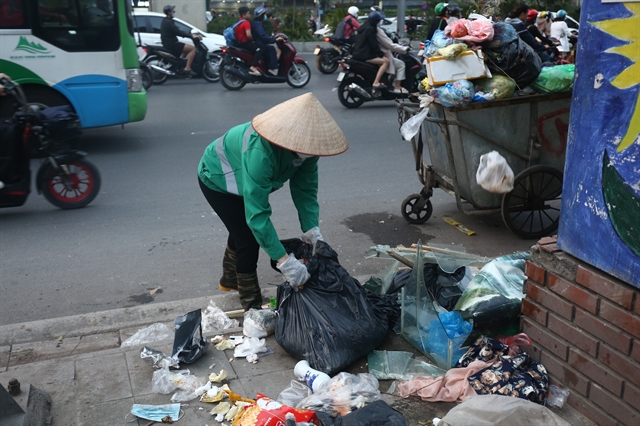 Economy
Economy

Demand for bamboo products is rising globally, offering Việt Nam the opportunity to foster the industry.

|
| Visitors look at bamboo products on display at the event to promote bamboo products in HCM City on December 26. — VNS Photo |
HCM CITY — Demand for bamboo products is rising globally, offering Việt Nam the opportunity to foster the industry.
Bamboo consumption is 400 – 500 million culms for various purposes annually, including making products for export.
With more than 720 handicraft villages that make bamboo products and over 1,000 bamboo and rattan production and trading establishments and companies, Việt Nam is currently the fourth largest exporter of bamboo and rattan after China, the EU and Indonesia.
“The world has shifted to products made from regenerative and environment-friendly materials from timber, plastic and steel,” said Võ Tân Thành, director of the Việt Nam Chamber of Commerce and Industry (VCCI)’s HCM City office.
Bamboo not only has high economic value but also helps cover bare land and hills to prevent erosion and protect watershed forests and contributes to poverty reduction, Thành said at the seminar ‘Green Steel – Potential in the Domestic and Export Markets’ held last week in HCM City.
Phạm Quốc Khánh, chairman of the Minh Thắng Ecology Wood Bamboo Joint Stock Company, said: “Việt Nam has an enormous natural source of bamboo.”
The global trade in 2018-19 was worth nearly US$70 billion, and “Demand for bamboo products is increasing rapidly, offering a great opportunity for Việt Nam’s bamboo industry,” Khánh said.
According to Khánh, with annual exports of $250 million, the bamboo industry has attracted more attention and investment. However, it faces a number of difficulties that affect its competitiveness, including lack of reliable supply of bamboo, backward equipment and technologies, lack of manpower, poor design, and lack of copyrights for its products.
“Businesses have also faced difficulty finding outlets for their products due to a lack of human resources for marketing, market research and promotion,” he said.
They therefore export their products mainly through intermediaries or produce for foreign brands.
With the use of modern technology, bamboo is no longer used only to make household products and handicrafts, but also industrial items.
Nguyễn Trọng Nghĩa, founder of the BWG Mai Châu JS Company, said industrial products made from bamboo are quite new in Việt Nam, but are very popular in developed countries, especially the EU.
Due to their hardness, scratch- heat- and water-proof qualities and great stability in all weather conditions, bamboo is used to make mats, curtains and paper and has replaced wood in making partitions, walls, flooring, scaffolding, and furniture for houses, resorts, restaurants, airports, swimming pools, and churches, he said.
Delegates said bamboo products have the advantage of being safe, environment-friendly, durability, and reasonable prices.
Leading bamboo product producers have displayed a wide range of products, and attracted a large number of visitors at the event.
Organised by VCCI, Vietbuild Home 2020 International Exhibition organisation committee and the Advocacy Committee for the establishment of the Việt Nam Bamboo Association as part of the Vietbuild Home expo being held at the SECC in District 7 from December 26 to 30, the event offers an opportunity for producers of bamboo products to meet potential buyers and solution providers.
It is part of promotional efforts under the EU-funded ‘Inclusive and sustainable clam and bamboo value chains development in Việt Nam’ project carried out by Oxfam, ICAFIS, NTFPR and the VCCI in 2018-22.. — VNS




